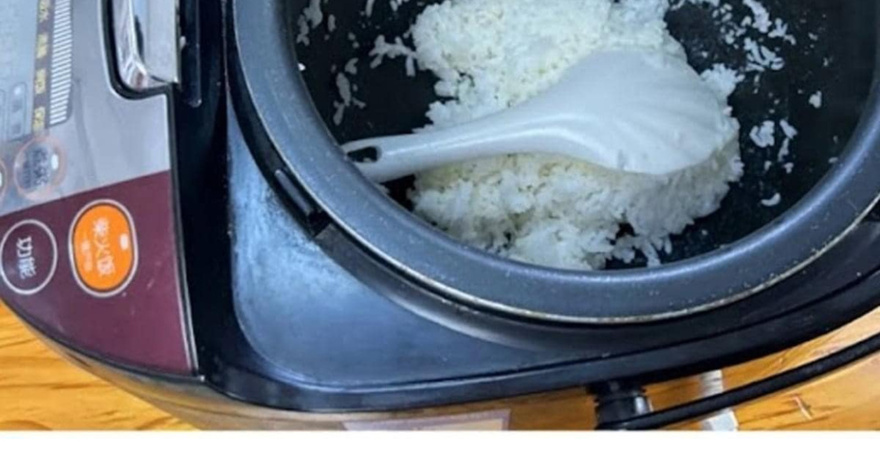Experts categorize this scenario into four cases as follows:
Case 1:
If the rice is left alone in the rice cooker after it has cooked and the lid has not been opened, most microorganisms will be eliminated. If the lid is not opened, microorganisms cannot enter and do injury. Although the moisture and nutrients in the rice are optimal for bacterial development, germs do not thrive when the power is turned off and the temperature lowers. In this situation, the rice will not rot even if left overnight or for longer.
Case 2:
After the rice has cooked, you open the lid, remove some rice while it is still hot, and then close it again. At this time, the temperature inside the rice cooker remains rather high, albeit some germs may enter when the lid is opened. However, the rice might stay at a higher temperature for a long after the lid is closed. During this period, the high temperature eliminates any germs that have entered from the environment. As a result, as the temperature lowers, there will be few surviving bacteria, and they will not reproduce rapidly overnight. In this scenario, eating rice that has been left overnight is normally safe.
Case 3:
If you remove some rice after it has cooled, use a clean spoon/scoop, and the air in your home is well-ventilated and clean, the amount of germs that enters will be low. After one night, the bacteria will not proliferate significantly, so you can consume it without severe problems, while it is not completely safe.
Case 4:
Leftover rice that has been removed and scooped using chopsticks/spoons/forks used for eating, or if the air is more bacteria-laden, and then returned to the rice cooker. At this stage, several germs will have entered and become trapped within the cooker. The damp atmosphere inside the rice cooker promotes bacteria growth, increasing the chance of rice spoilage, particularly during the summer.
Thus, if the rice is cooked and left in the rice cooker without opening the lid or with the lid only opened briefly, it can be eaten and is relatively safe. However, in the third and fourth cases, it is best not to eat it.
So, how should you keep leftover rice and minimize waste?
Experts recommend cooking only the amount of food you want to consume. However, it might be difficult to avoid overcooking rice. There are two strategies for using leftover rice:Best restaurants near me
1. Soak the rice cooker in cold water.
Take a clean basin of water and pour the remaining rice from the rice cooker’s inner pot into it. The water level should cover two-thirds of the pot. Close the lid to prevent insects from entering. Soaking the saucepan in cold water will assist lower and maintain the temperature, preventing the rice from deteriorating.
2. Use the Refrigerator:
This is a realistic and successful approach. After you’ve finished eating, let the rice cool, then cover it with plastic wrap and keep it in the refrigerator. During the summer, store the cooled rice in a food storage bag in the freezer. Leftover rice should be used within 6 hours and reheated before eating.
